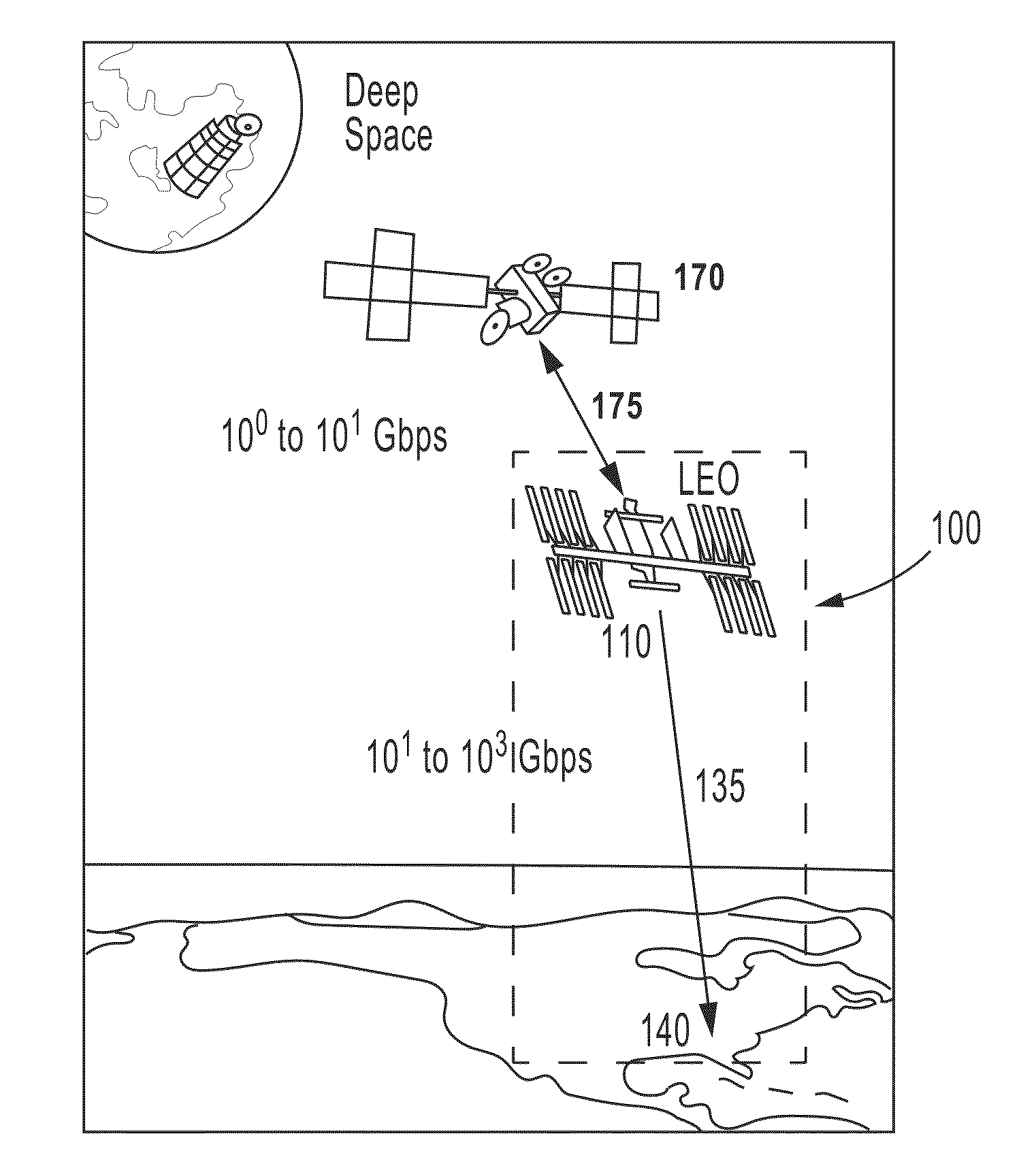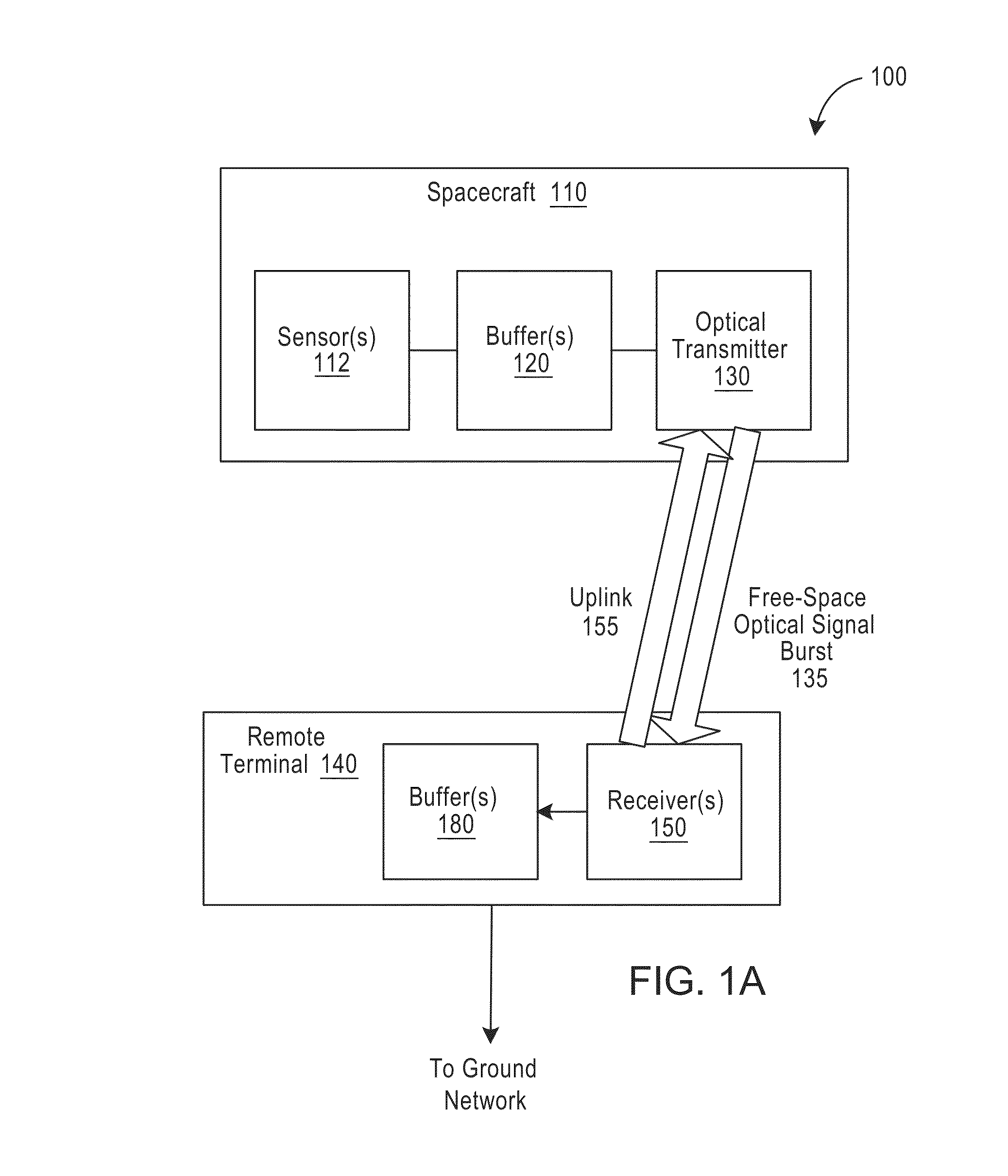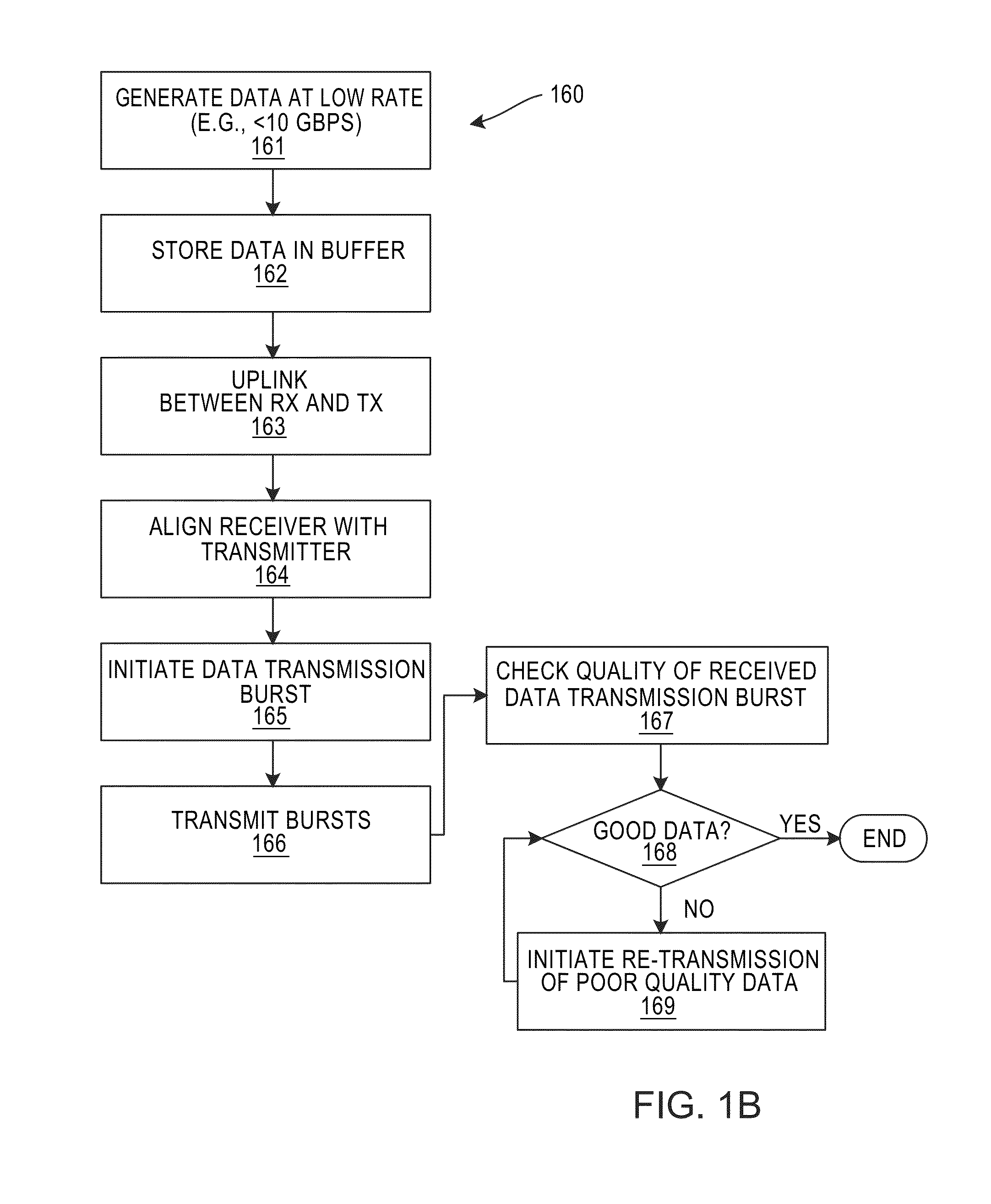Network of extremely high burst rate optical downlinks
a technology of optical downlinks and optical downlinks, applied in the field of network of extremely high burst rate optical downlinks, can solve the problems of inefficient relay schemes and limitations of conventional satellite-to-earth data transmission systems, and achieve the effect of fast readout and high burst ra
- Summary
- Abstract
- Description
- Claims
- Application Information
AI Technical Summary
Benefits of technology
Problems solved by technology
Method used
Image
Examples
Embodiment Construction
[0038]The direct downlink communications systems described herein leverage the extremely short wavelengths of optical telecom signals to achieve free space optical links that are only a few thousand kilometers long or less, and that deliver enough optical power (e.g., about 100 nW to a few μW) to support extremely high data rates with compact, low-cost satellite terminals and compact, low-cost remote terminals on the ground, in the air, or on other satellites. Such a system may include a satellite terminal that is small enough to be carried on a microsatellite (e.g., a 1U-6U cubesat) in low-Earth orbit (LEO) and have a mass of about 3 kilograms or less. Burst rates supported by these satellite terminals can be nearly any rate supportable in the fiber telecom market, for example, several hundreds of gigabits per second up to multiple terabits per second. Thus, these satellite terminals have direct downlink burst capabilities that can empty even very large storage buffers (e.g., 1 Tb,...
PUM
 Login to View More
Login to View More Abstract
Description
Claims
Application Information
 Login to View More
Login to View More - R&D
- Intellectual Property
- Life Sciences
- Materials
- Tech Scout
- Unparalleled Data Quality
- Higher Quality Content
- 60% Fewer Hallucinations
Browse by: Latest US Patents, China's latest patents, Technical Efficacy Thesaurus, Application Domain, Technology Topic, Popular Technical Reports.
© 2025 PatSnap. All rights reserved.Legal|Privacy policy|Modern Slavery Act Transparency Statement|Sitemap|About US| Contact US: help@patsnap.com



